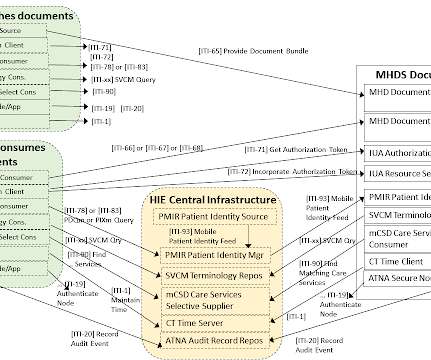Mobile Health Document Sharing (MHDS) Profile
Healthcare Exchange Standards
FEBRUARY 27, 2020
This profile shows how to build a Document Sharing Exchange using IHE profiled FHIR® standard, rather than the legacy IHE profiles that is dominated by XDS and HL7® v2. This profile will assemble profiles and define a Document Registry. The actor that is specific to this profile is a Document Registry. 3 - Section 4.0













Let's personalize your content